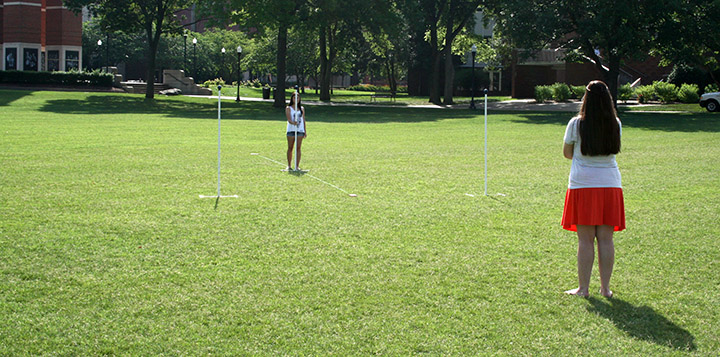Vision and Haptics Lab

Mission Statement
Our laboratory studies the human perception of distance, spatial relationships, and the 3-dimensional shape of environmental objects. We study both the visual and haptic perception (i.e., through active touch) of 3-D object shape, since vision and haptics are the primary sensory modalities by which human beings perceive shape. We use behavioral or psychophysical* methodologies to investigate how human observers perceive 3-D shape. This research is basic in nature and is concerned with determining how humans (and probably many other animals as well) perceive the shape and 3-D location of objects in their environment. Biological perceptual systems have the capability to rapidly perceive depth and 3-D object shape; if this were not the case, animals and people would not be able to find and locate food, interact with objects, make tools, or navigate effectively in complex or cluttered 3-D environments. An effective life would be difficult without our senses of vision and touch. At the moment, the perceptual capabilities of biological systems far exceed those of artificial (i.e., electronic) visual systems. The in-depth study of human and animal perceptual systems should ultimately lead to the creation of better and more effective robotic visual systems.
As part of our research, we also study changes in 3-D perception that accompany aging. We have already determined that older adults are able to effectively perceive many aspects of 3-D object shape well into their 70's and 80's. By studying those age-related perceptual degradations that do occur, it helps us to better understand the normal perceptual processes that exist in younger adults. Identifying these age-related perceptual deficits also helps to predict which behavioral activities are safe for older adults, and which are dangerous. Thus, the further study of aging and perception may help all of us to live a safer life as we become older.
*Psychophysics was conceived by Gustav Fechner in 1850; Fechner was a German physicist
and medical doctor. In 1860, he published Elemente der Psychophysik, in which he stated
"Psychophysics should be understood here as an exact theory of the functionally dependent
relations of body and soul or, more generally, of the material and the mental, of
the physical and the psychological worlds." Thus, Fechner was one of the first scientists
to quantitatively and experimentally study how human observers perceive their physical
surroundings. An English translation of volume 1 of Fechner's Elements of Psychophysics
was not published until more than 100 years later (1966).
Text of my web pages freely available CC BY-SA, photographs Copyright (c), J. Farley Norman 2018.

